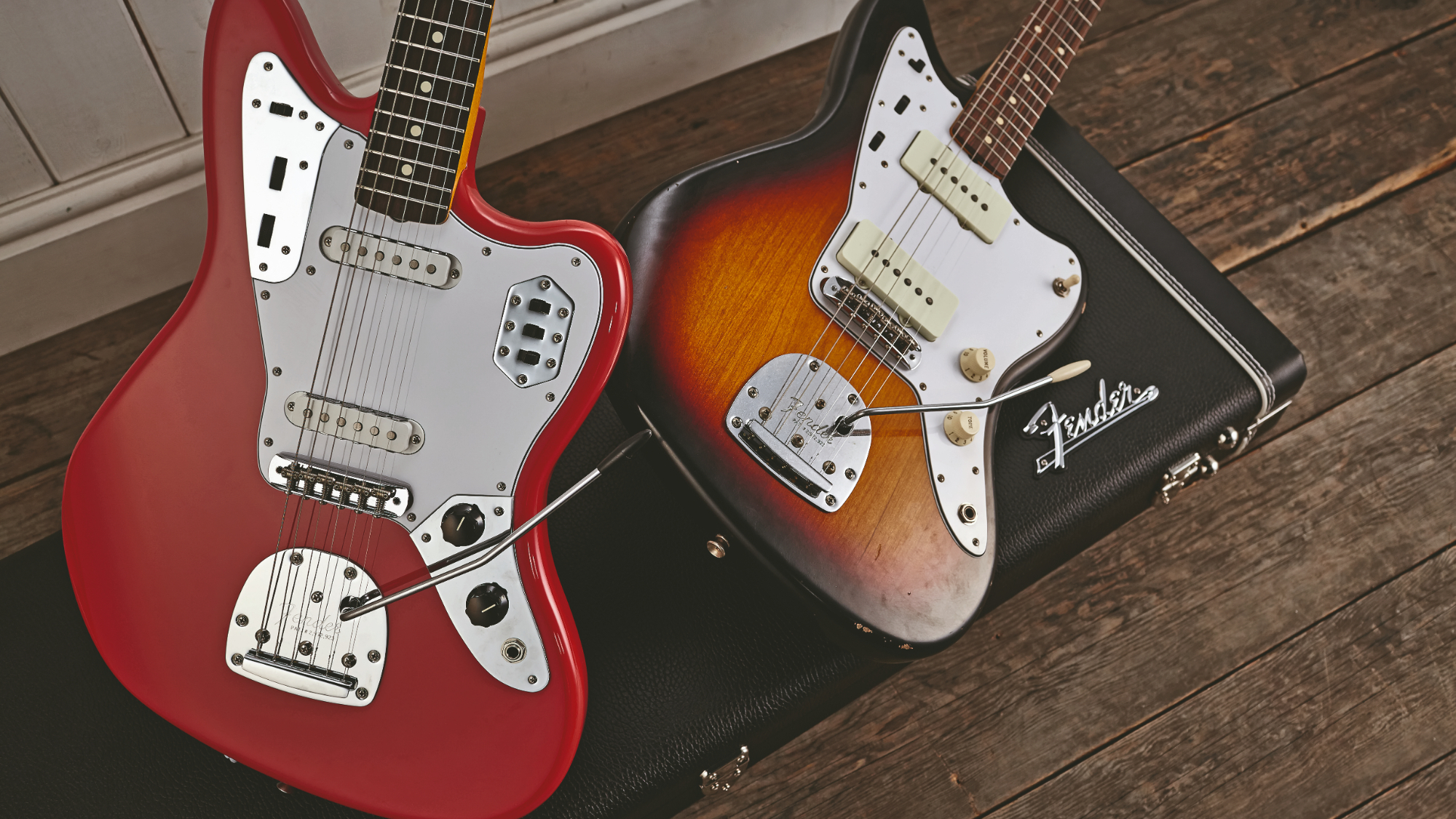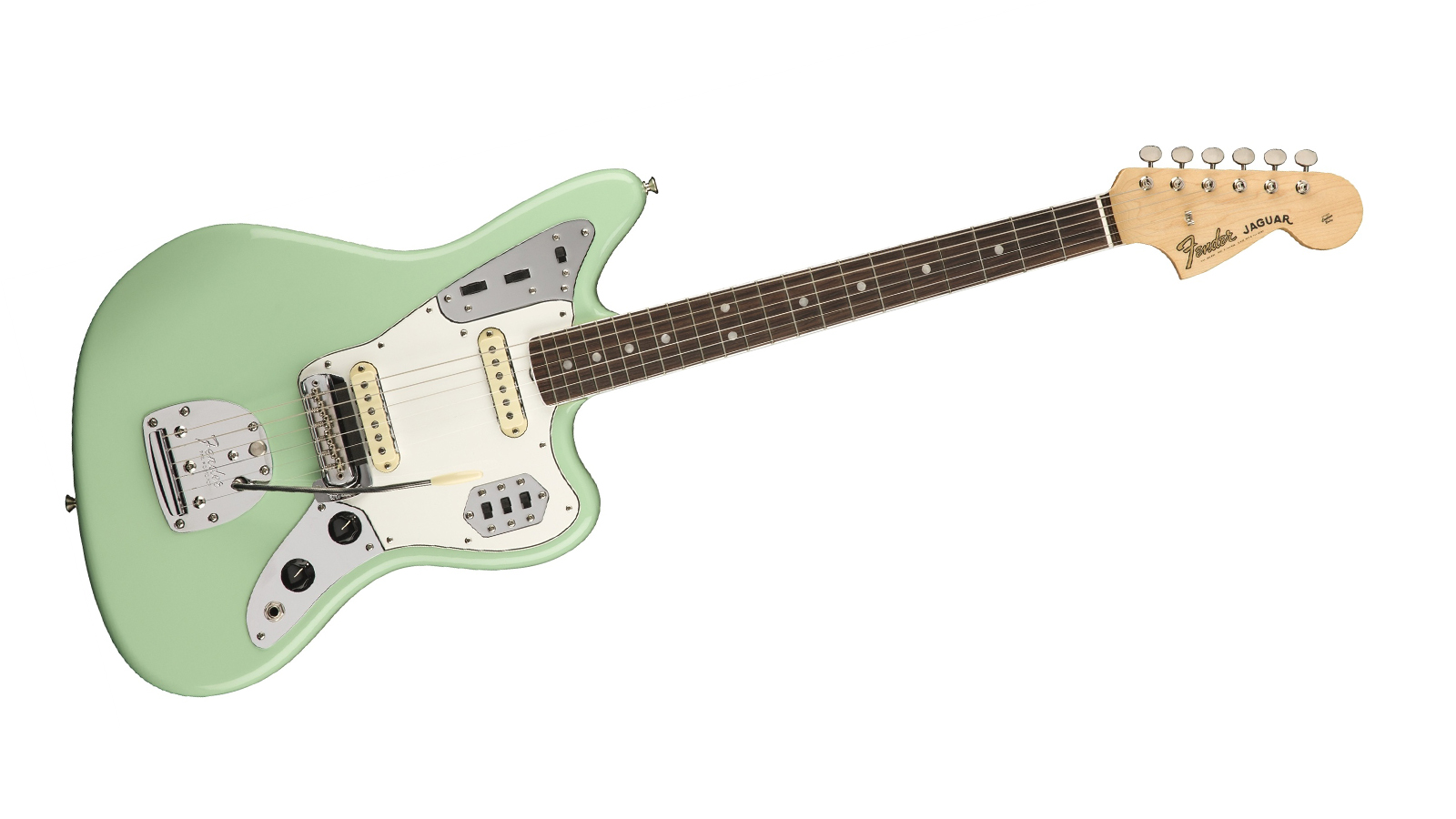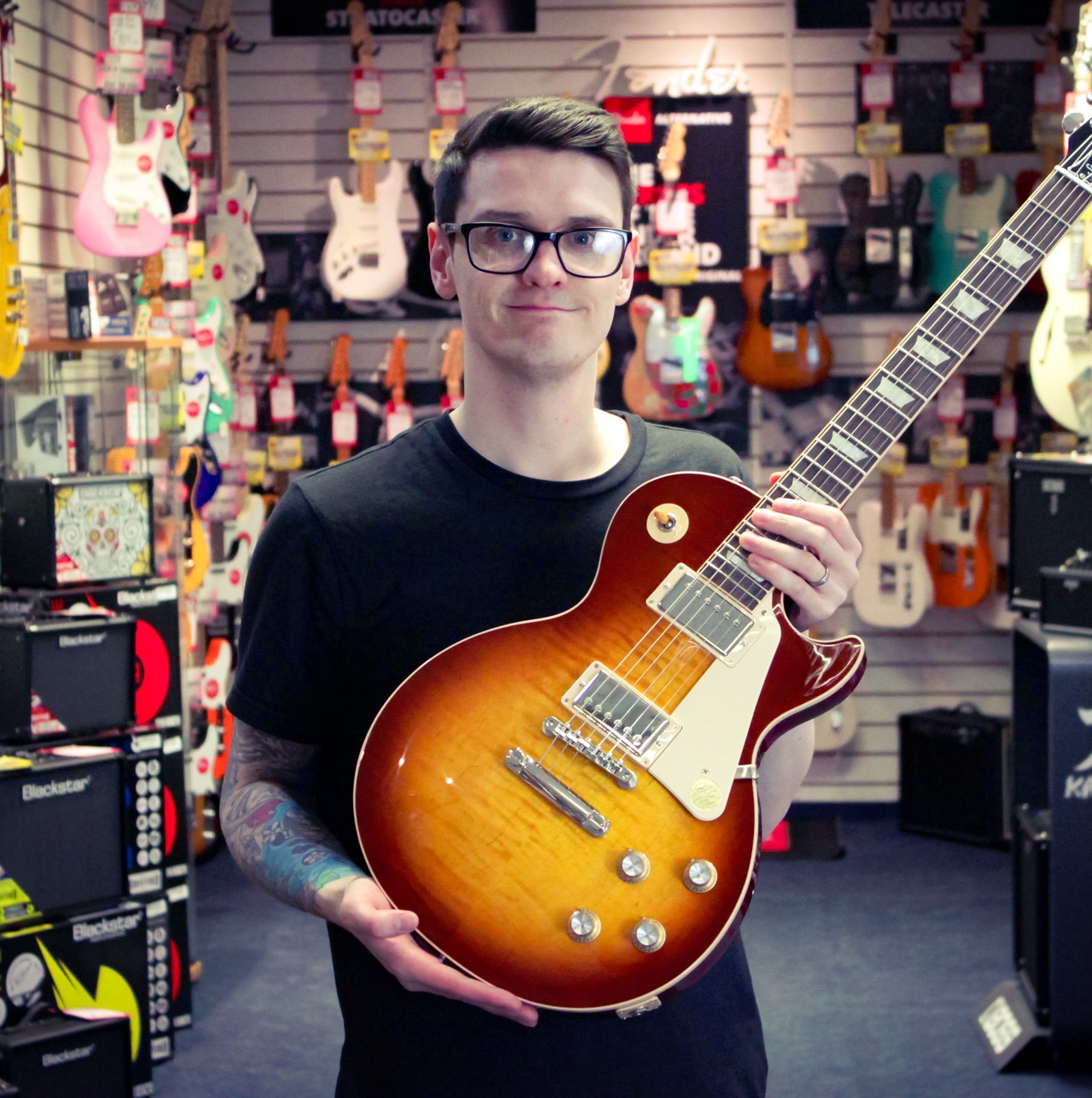Jazzmaster vs Jaguar: what's the difference between these iconic Fender offsets?
Fender's Jazzmaster and Jaguar have transcended genres, but which is the right guitar for you? Time to unpick the history, players and tones

Few electric guitar styles get our hearts fluttering quite like an offset, and the king and queen of these lopsided six-strings are undoubtedly the Fender Jaguar and Fender Jazzmaster. Often the victims of mistaken identity, many players struggle to tell them apart, let alone recognize the subtle differences in spec between the two. So if you've ever asked yourself: what's the difference between the Jazzmaster and the Jaguar? We'll hopefully clear it up for you once and for all today.
Both the Jazzmaster and Jaguar have enjoyed a long and varied time in the limelight. Moving out of the dimly lit, smokey jazz clubs to the sun-kissed beaches of the California surf scene before finally landing in the hands of disenfranchised alt-rockers. These two guitars have most certainly cemented themselves into the guitar-playing zeitgeist to become two of the most popular models ever released.
Now, they may be celebrated, but they are often misunderstood, so let's finally break down the differences between these two offset titans.
Jazzmaster vs Jaguar: Jazzmaster history

The Jazzmaster's story begins in 1958, which was quite the year for the electric guitar. Gibson had set their sights firmly on shaking up the guitar world with the release of the radically styled Flying V and Explorer while also reimagining their Les Paul model as a sunburst beauty. On the other hand, Fender had views on taking on the side of the market that, despite the Californian guitar company's popularity, had remained somewhat elusive – the jazz players.
This model was a drastic departure from the Strat and Tele that came before and offered the serious jazz-cats a serious instrument full of tone-altering features. The Jazzmaster's famous offset waist had never been seen before on a Fender instrument, and this gave the guitar a somewhat space-age look. Now, its crooked silhouette may have given the Jazzmaster a unique aesthetic, but it was actually designed that way to meet the expectations of the guitar's new demographic. Jazz musicians were often seated while performing, and this new offset design made the guitar more comfortable and better balanced in this position.
The JM also stood out from the other guitars in Fender's legendary catalog, as it featured a new switch and thumbwheels that still trump players today, and a floating bridge with an anchored tailpiece which allowed players to subtly add a little movement to the chords and lead lines.
Of course, while this guitar was adopted by a few of the jazz musicians of the day, it never quite set the jazz world on fire as Fender had hoped. That said, it wasn't all over for the humble Jazzmaster, as it would be embraced with open arms by the surf guitar community in the sixties, again by the new wave a decade later, and yet again by the alternative rock scene. Not bad for a failed jazzer, right?
All the latest guitar news, interviews, lessons, reviews, deals and more, direct to your inbox!
Jazzmaster vs Jaguar: Jaguar history

The Jaguar burst onto the scene in 1962 and was Fender's attempt at a new high-end model. Obviously, the Jaguar took many of its design cues from its older brother, but it did offer players something never seen on a Fender before – a short scale. This is a direct plea to try and win over some of the Gibson players Fender was yet to impress as well as offer fans of the brand something different.
Now, by the mid-sixties, the British invasion was in full swing, and as a result, surf music was struggling to stay afloat.
It's safe to say that Fender embraced its newly found favor with the surfers and even showed the Jaguar being played atop the waves in the now-iconic "you won't part with yours either" ad. This chrome-clad axe was a relative hit on release and was used by many famous artists of the time.
Now, by the mid-sixties, the British invasion was in full swing, and as a result, surf music was struggling to stay afloat. Unfortunately, this would prove to be a storm the Jaguar couldn't weather, and in the subsequent years, the Jaguar too would fall out of favor – eventually being discontinued in 1975.
Like the Jazzmaster before it, the Jaguar would then go on to be adopted by the punk and grunge guitarists in the '80s and '90s – mainly because of their affordability in pawn shops – and well, the rest is history.
Jazzmaster vs Jaguar: Differences and sounds

Okay, so we've covered the very brief history of these mythical six-strings, let's now break down the main differences between a Jazzmaster and Jaguar. As we alluded to above, the scale length is the most significant difference between these two guitars. While the Jazzmaster opts to stick with the tried and true 25.5" found on its predecessors. The Jaguar sports the much shorter 24" scale. As you'd expect, this gives the Jag a more slinky and compact feel – perfect for those with small arms, or those who prefer less tension on the strings.
Just as famous as their eye-catching curves are the mind-boggling switches, and that is the next big difference. Where the Jaguar features three switches located on the bottom horn – neck pickup on/off, bridge pickup on/off and bass roll-off - the Jazzmaster sports the standard three-way toggle much like a Les Paul or SG.
The single switch at the top has the same function on both guitars. The Rhythm circuit is used to bypass all other controls while singling out the neck pickup. A change in tone pot and capacitor results in a much mellower sound. The discrete thumbwheels adjacent to this switch are simply independent volume and tone controls for this rhythm circuit.
The last big difference is the tonal generators of the guitar – the pickups. The Jazzmaster employs a much flatter and wider pickup that produces a full, warm tone. While the Jag uses a more traditional sized single-coil, but with the addition of a metal claw, which provides extra shielding to reduce the hum and buzz – much to the delight of Jazzmaster owners. Because of this difference in pickups, the Jaguar has a narrower and brighter tone.
Jazzmaster vs Jaguar: The players

When you think of the Jazzmaster, many names come to mind. The likes of Dinosaur Jr. frontman and fuzz aficionado J Mascis, Thurston Moore of Sonic Youth, and Kevin Shields of My Bloody Valentine have all used the JM to develop their signature sounds. Less noisy acts such as Elvis Costello and Jonny Buckland have also opted for the smooth, rich tone of the Jazzmaster.
This just proves how versatile the Jazzmaster can be. Whether you are playing smooth jazz, reverb-soaked surf music, or fuzzed-out noise rock, the Jazzmaster will happily take it in stride.
The Jaguar has a similar list of names associated with it – with many playing both – and also refuses to be pigeonholed into one particular genre. Easily the most famous Jag-wielder has to be Kurt Cobain. For most people, Kurt's heavily modified Jag is the sound of grunge – well, that and the Boss DS-1 – and has inspired many players to pick up the guitar. Other notable players to dawn the Jag include Will Sergeant of Echo & the Bunnymen, Johnny Marr of the Smiths, and of course, John Frusciante.
Jazzmaster vs Jaguar: Buying advice

Okay, so that's the difference, but where do you start if you are looking to purchase one of these twang-machines? Well, first, it has to be said that despite sharing many similarities in looks, the Jazzmaster and Jaguar are very different guitars, and they offer their own tone and feel. So it's worth finding out which feels and sounds the best to you.
Next, you need to decide which era of Jmaster and Jag speaks to you the most. If you fancy channeling the punk attitude of the '80s and '90s, then you'll want to opt for a "modified" model that includes the likes of humbucking pickups and possibly simplified switches. It's worth examining the Player Series, Vintera Modified, and Contemporary Series, as these guitars come ready-made to make a racket.
Of course, if you're seeking a more retro vibe, there are several options available with classic reissues at all price points. These guitars set out to capture the sounds and styles of the late '50s and early '60s and often include lower output pickups, narrow frets, and vintage-inspired hardware. If this is the route you want to take, then be sure to check out the American Original line, Vintera Series, and Squier Classic Vibe.
Jazzmaster vs Jaguar: Recommended Jazzmasters

1. Squier Classic Vibe Jazzmaster
Our expert review:
Specifications
Reasons to buy
Reasons to avoid
It's no secret that we love the Classic Vibe series here at Guitar World. Whether it's the Stratocaster, Telecaster, or Jazzmaster, they offer superb value for money. Designed to pay respect to the guitars of the past, the Classic Vibe '60s Jazzmaster offers players period-correct appointments at a fraction of the cost of an original instrument.
Featuring a set of Fender-designed alnico single-coil pickups, comfortable C profile neck, 9.5" radius fingerboard, and narrow-tall frets, this guitar certainly feels and sounds the part!
Throw in three insanely popular finish options – Sonic Blue, Olympic White, and 3-Color Sunburst – and you have a guitar that's simply hard to beat, especially at this price point.

2. Fender Vintera '60s Jazzmaster Modified
Our expert review:
Specifications
Reasons to buy
Reasons to avoid
Some players love the look of the vintage Jazzmasters, but the low output pickups simply can't keep up with their high-octane playing. Well, luckily Fender has a new option. The Fender Vintera '60s Jazzmaster Modified is a retro-inspired six-string that houses contemporary upgrades to help the guitar perform better in a modern setting.
The two Hot '60s Jazzmaster wide single-coil pickups offer a considerable boost in power compared to the pickups found in the originals. At the same time, the Modern C-shaped maple neck with satin back finish and 9.5" radius fingerboard offers a level of comfort that today's players have come to expect.
So if you fancy the retro look but a modern feel, the Fender Vintera '60s Jazzmaster Modified is the perfect Jazzmaster for you.

3. Fender American Professional II Jazzmaster
Our expert review:
Specifications
Reasons to buy
Reasons to avoid
The American Professional II Jazzmaster brings this cult classic guitar kicking and screaming into the modern age with a myriad of player-friendly features.
The Deep C neck - with its rolled edges – offers a playing experience not found on vintage examples, while the sculpted neck heel solves the issue of the bulky join on the original design. The V-Mod II single-coil pickups are genuinely superb, delivering the retro tones you'd expect from a JM, while the tap function on the bridge position gives you access to a modern throaty tone.
This ultra-sleek guitar is the pinnacle of what is possible with the Jazzmaster design, and if you are looking for the best Jazzmaster out there, then you most definitely need to seek this one out.
Jazzmaster vs Jaguar: Recommended Jaguars

1. Squier Classic Vibe '70s Jaguar
Our expert review:
Specifications
Reasons to buy
Reasons to avoid
There is something about a Jaguar with block inlays that gets us weak at the knees, and when we consider the price point, we fall in love even more. Like the Squier Classic Vibe '60s Jazzmaster, the Classic Vibe '70s Jaguar offers vintage mojo at an unbeatable price.
The specially designed Fender alnico single coil pickups do a fantastic job of recreating the sound of the past, producing the high-end sparkle you've come to expect from a Jag. In addition, the neck with its 9.5" radius fingerboard and narrow-tall frets is exceptionally comfortable, while the 24" scale helps provide a super slinky feel.
Completing the look is a 1970s-inspired headstock logo, vintage machine heads, and era-correct finish options.

2. Fender Player Jaguar
Our expert review:
Specifications
Reasons to buy
Reasons to avoid
The Player Series was a runaway success when it landed a few years ago, and it's easy to see why. These Mexican-made guitars offer players a giggable instrument that's affordable, well made, and sounds excellent.
The Player Jaguar is a grunge lover's dream, with its fierce humbucking pickup in the bridge position and simplified control layout. The Fender-designed humbucker is also coil-splittable via the switch located on the top horn, meaning you can achieve retro Jag tones if needed.
Coming in four fabulous finishes, such as Black, Capri Orange, 3-Color Sunburst, and our personal favorite Tidepool, means there's an option to suit your individual style.

3. Fender American Original '60s Jaguar
Our expert review:
Specifications
Reasons to buy
Reasons to avoid
The Fender American Original '60s Jaguar takes all the best elements from the golden age of the Jag and distills them down into one guitar. With period-correct style, as well as specially designed electronics, this guitar looks and feels just as it should.
The stunning Pure Vintage '62 pickups have been crafted to reproduce the authentic Fender sound of the swinging sixties, while special consideration has been paid to the body shape and neck radius, ensuring that the body and neck are as accurate as they can be to the historical originals.
This guitar comes with the stunning deluxe brown hardshell case with a dazzling gold interior.

Daryl is a Senior Deals Writer at Guitar World, where he creates and maintains our 200+ buyer's guides, finds the best deals on guitar products, and tests the latest gear. His reviews have been featured in prominent publications like Total Guitar, Guitarist, Future Music magazine, and MusicRadar.com.
During his career, he has been lucky enough to talk to many of his musical heroes, having interviewed Slash and members of Sum 41, Foo Fighters, The Offspring, Thrice, and more. In a past life, Daryl worked in music retail. For a little under a decade, he advised everyone from absolute beginners to seasoned pros on the right gear for their needs.
Daryl is a fully qualified sound engineer, holding a first-class Bachelor's degree in Creative Sound Production from the University of Abertay.
